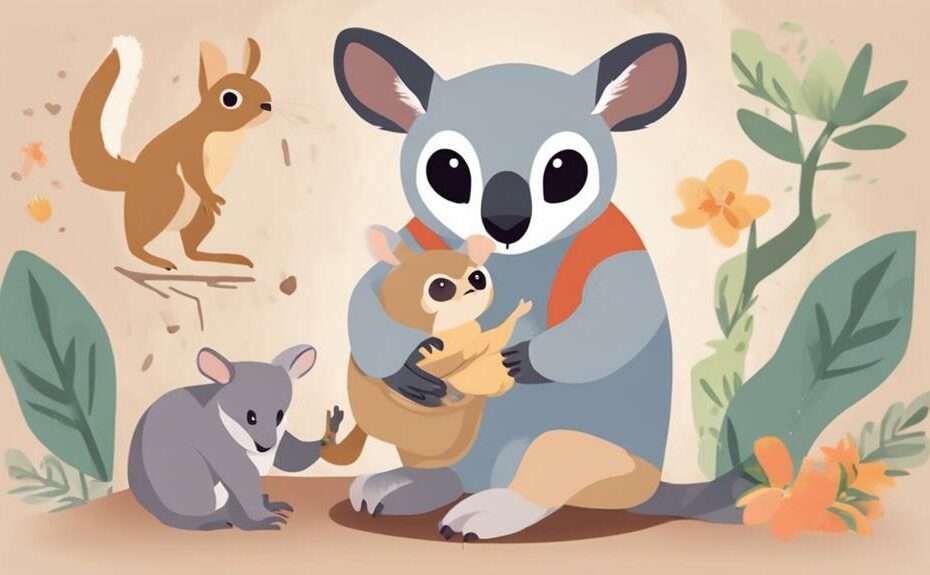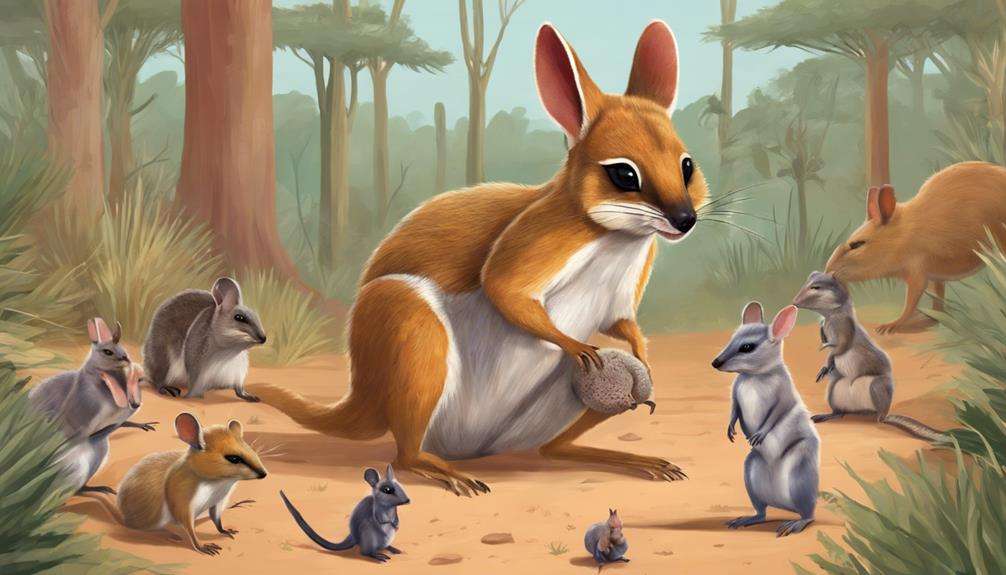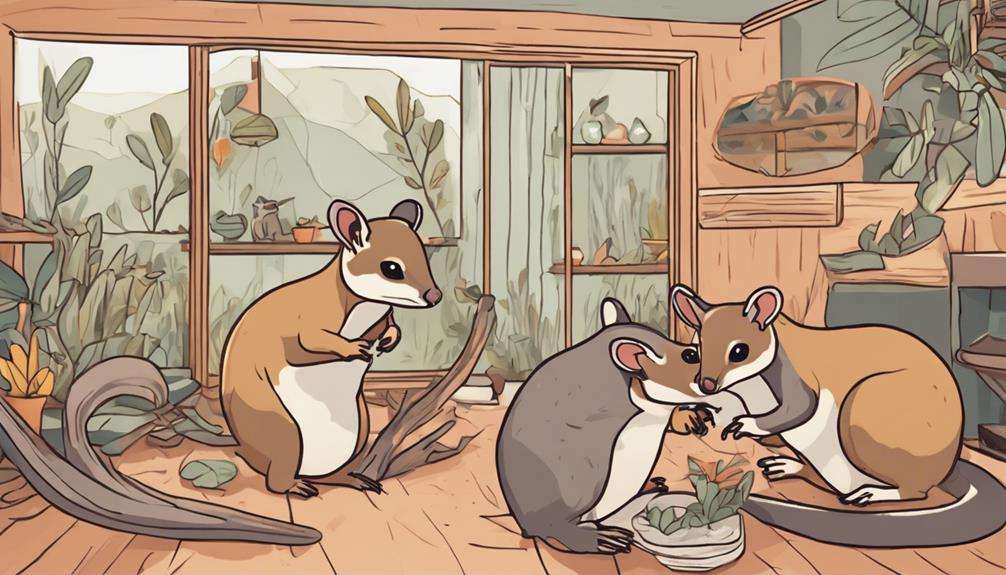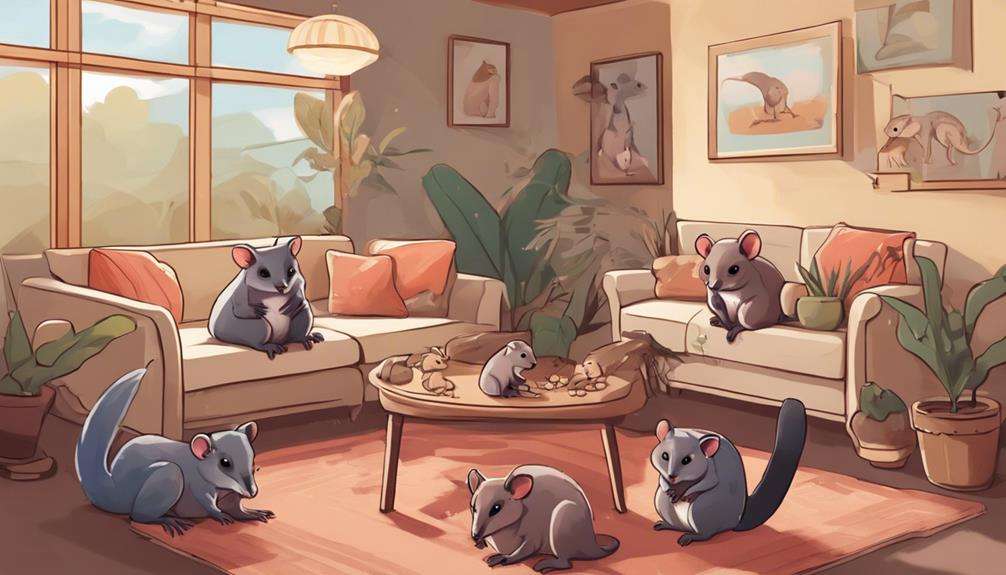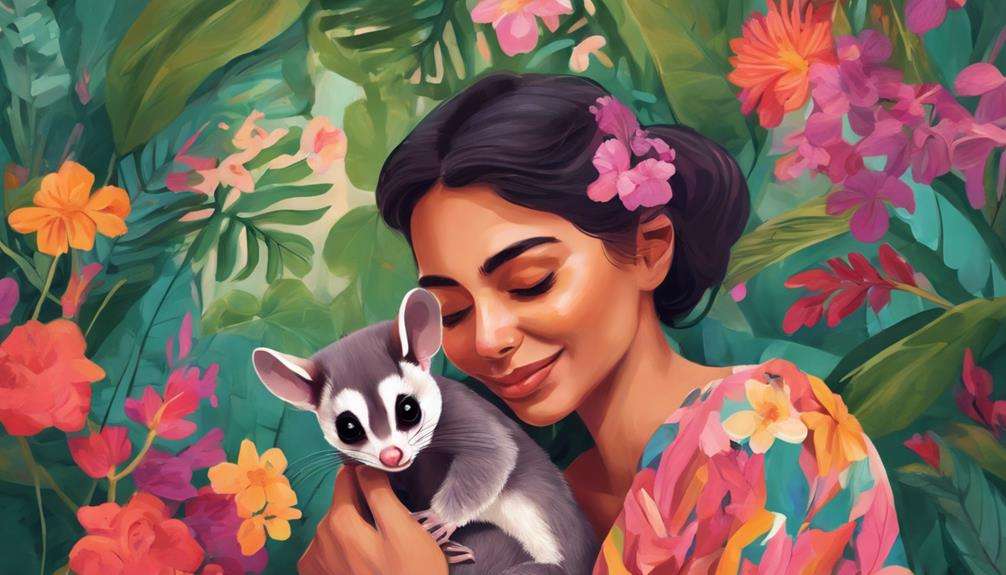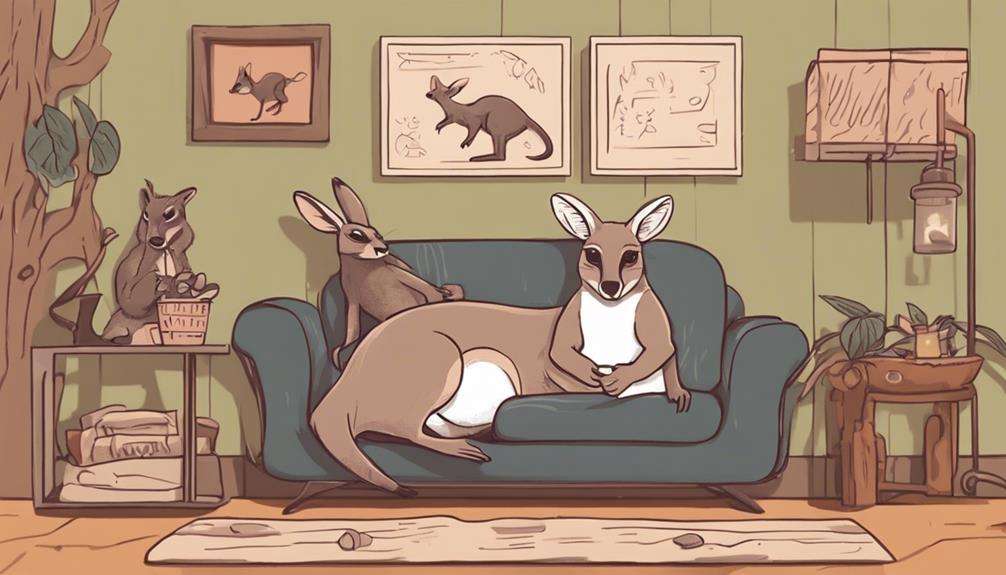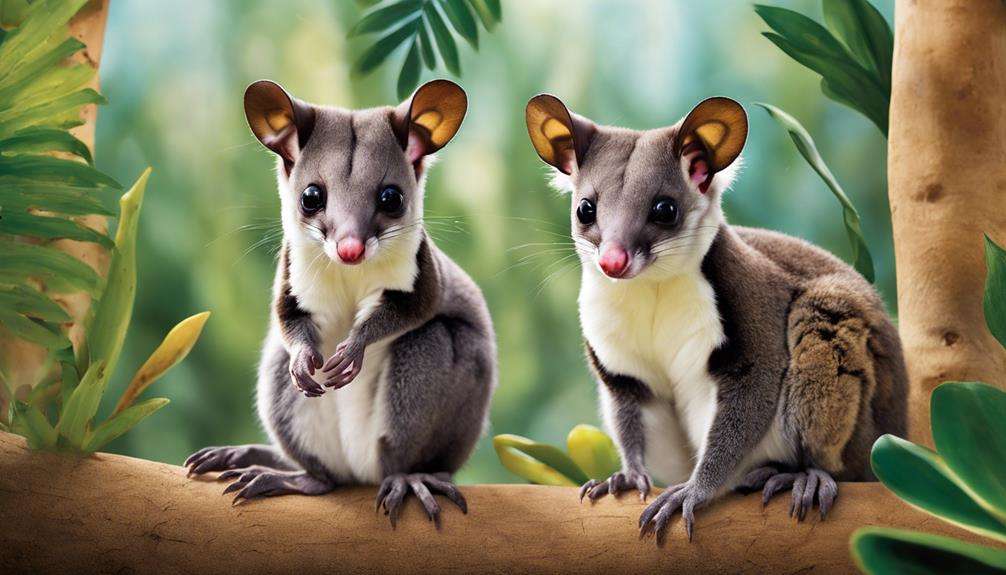Have you ever wondered which marsupials could make great pets for animal lovers like yourself? Imagine having a unique companion that stands out from conventional furry friends.
The list of potential marsupial pets includes some lesser-known species that might surprise you. These creatures offer a distinctive charm and require specialized care, making them intriguing choices for those seeking an unconventional pet experience.
Stay tuned to discover the top 10 marsupials that could potentially become your next furry companion.
Key Takeaways
- Kangaroos and sugar gliders are fascinating marsupials suitable for pet ownership.
- Understanding their unique biology and care requirements is essential.
- Bonding with sugar gliders through regular interaction is crucial for their well-being.
- Providing a balanced diet, suitable environment, and social interaction are key for marsupial pets.
Kangaroos
Kangaroos, fascinating marsupials native to Australia, are renowned for their robust hind legs and distinctive tails. When considering exotic pet ownership, it's crucial to understand that kangaroos aren't conventional domestic animals. Their unique biology, especially the reproduction process where joeys develop in the mother's pouch, requires specialized care that can be challenging for inexperienced owners. Kangaroos are highly social animals, living in groups known as mobs or troops. Mimicking this complex social structure in a domestic setting can be demanding and may not always be feasible.
Keeping kangaroos as pets also raises ethical concerns regarding their welfare and the potential impact on their natural habitat. Due to their size, strength, and specific dietary needs, providing a suitable environment for kangaroos can be expensive and labor-intensive. Additionally, laws and regulations surrounding the ownership of kangaroos vary, and in many places, it's illegal to keep them as pets without special permits. Overall, while kangaroos are captivating creatures, their suitability as pets is questionable due to their marsupial biology and intricate social dynamics.
Sugar Gliders
Sugar gliders, known for their gliding behavior, possess a patagium – a skin membrane that enables them to glide from tree to tree with grace and agility.
Understanding their dietary and care requirements is crucial for maintaining their health and well-being, as they thrive on a balanced diet rich in fruits, vegetables, and protein sources.
Bonding with sugar gliders is essential, as these social animals require regular human interaction to build trust and form strong, lasting relationships.
Gliding Behavior Explanation
Gliding behavior in sugar gliders is a remarkable adaptation that enables efficient movement through their forest habitat while conserving energy.
- Patagium Structure: The patagium is a specialized membrane that stretches from the sugar glider's wrists to its ankles, forming a wing-like structure for gliding.
- Efficient Movement: Gliding allows sugar gliders to cover distances quickly without expending excessive energy, essential for their survival in the wild.
- Predator Evasion: This behavior helps sugar gliders escape predators by swiftly moving between trees and inaccessible areas.
- Aerial Abilities: Sugar gliders can glide up to 150 feet in a single leap, demonstrating their exceptional aerial prowess.
Diet and Care Tips
To ensure optimal health and well-being for sugar gliders in captivity, it's crucial to provide a balanced diet consisting of fruits, vegetables, insects, and a protein source like mealworms or lean meat. This diet should also include a calcium supplement and nectar or pollen to mimic their natural feeding habits.
Sugar gliders eat a varied diet in the wild, and replicating this in captivity is essential for their proper nutrition. It's important to avoid high-sugar, high-fat, and high-salt foods as they can lead to health issues like obesity and metabolic disorders.
Always ensure fresh water is available, especially in warmer climates, to prevent dehydration. Monitor your sugar glider's weight regularly and adjust their diet as needed to maintain a healthy body condition.
Bonding With Sugar Gliders
In order to form a strong bond with your sugar gliders, consistent and gentle interaction is crucial for fostering trust and companionship.
- Social Nature: Sugar gliders tend to thrive in groups and require regular human interaction to build a bond.
- Proper Housing: Providing a large cage with climbing equipment and toys is essential for creating a suitable environment for sugar gliders.
- Nocturnal Habits: These unique pets are nocturnal and enjoy cuddling in a nest during the day, so understanding their behavior is important for bonding.
- Nutritional Needs: Maintaining the right cage temperature and offering a diet rich in fruits, vegetables, and protein sources are vital for the well-being of sugar gliders.
Wallabies
Wallabies, belonging to the same family as kangaroos but smaller in size, are small to medium-sized marsupials predominantly found in Australia and nearby islands. These herbivores primarily feed on grasses, plants, and fruits. Known for their hopping locomotion akin to kangaroos, wallabies are fascinating social animals that live in groups called mobs. Their social nature makes them intriguing pets for those who've the necessary space and resources to accommodate them.
In Australia, wallabies are commonly encountered in various habitats ranging from forests to grasslands. Their adaptability to different environments has contributed to their widespread presence across the continent. As herbivores, wallabies play a crucial role in maintaining the balance of the ecosystem by controlling plant growth through their feeding habits. Additionally, their social behavior within mobs showcases intricate communication patterns and hierarchical structures, offering a unique insight into the dynamics of these marsupials. For animal lovers looking to experience the charm of marsupials up close, wallabies present an engaging and rewarding pet option.
Koalas
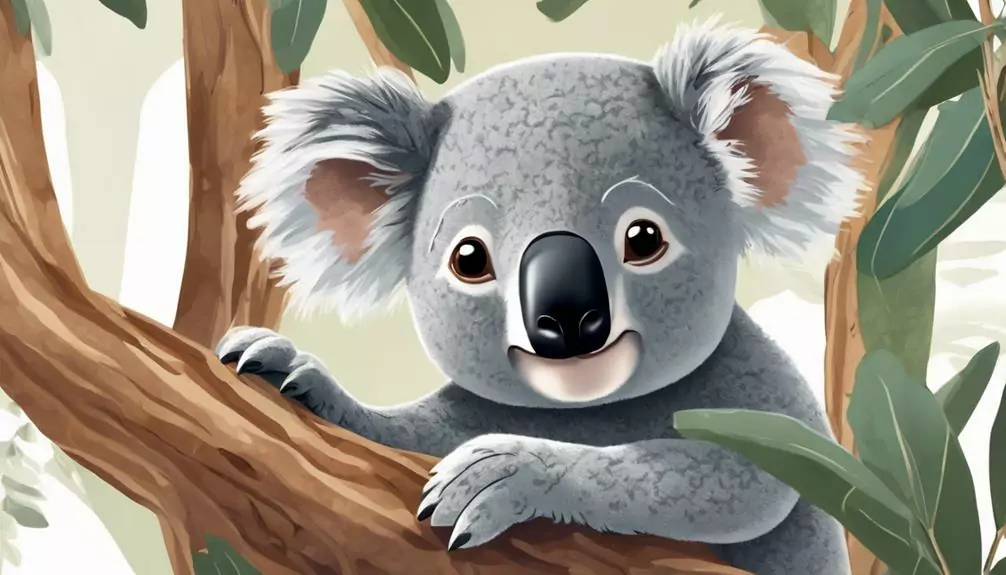
The solitary nature of koalas, coupled with their specialized diet and unique reproductive habits, distinguishes them as fascinating arboreal marsupials native to Australia.
- Arboreal Lifestyle: Koalas are well-adapted to living in trees, with their strong limbs, sharp claws for climbing, and specialized digestive system that allows them to efficiently process the tough eucalyptus leaves they primarily feed on.
- Eucalyptus Diet: Eucalyptus leaves aren't only the mainstay of a koala's diet but also serve as their primary source of hydration. These leaves are high in fiber and low in nutrition, requiring koalas to conserve energy by sleeping up to 20 hours a day.
- Pouch Reproduction: Female koalas have a forward-facing pouch where they raise their young, called joeys. The joey remains in the pouch for about six months, feeding on a specialized milk-like substance before gradually transitioning to eucalyptus leaves.
- Conservation Concerns: Koalas face numerous threats, including habitat loss, diseases like chlamydia, and the impacts of climate change. Conservation efforts are vital to ensure the survival of these iconic marsupials.
Bettongs
Native to Australia, bettongs are small, nocturnal marsupials known for their hopping behavior akin to kangaroos. These creatures are primarily active during the night, foraging for their omnivorous diet consisting of roots, tubers, fungi, and insects. Bettongs are essential in their ecosystem as they aid in seed dispersal, contributing to the regeneration of vegetation in their habitats.
Australia's unique wildlife faces threats, leading to conservation efforts to protect bettong populations in the wild. Habitat loss, predation by introduced species, and diseases are some of the challenges bettongs encounter, making conservation crucial for their survival. Organizations work tirelessly to safeguard these marsupials and their habitats to ensure their continued existence in the Australian landscape.
Considering their nocturnal nature, specialized diet, and conservation status, bettongs are fascinating creatures to observe in the wild. While they aren't typically kept as pets due to their specific needs and protected status, learning about them can foster appreciation for the delicate balance of ecosystems they contribute to in Australia.
Quokkas
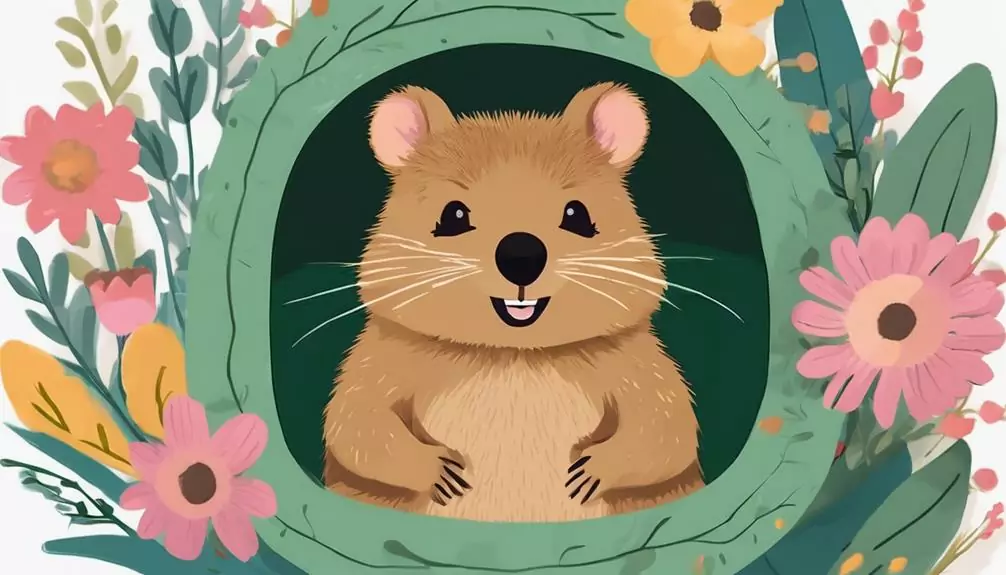
As you shift your focus from bettongs to quokkas, you encounter a fascinating glimpse into the world of small marsupials with a reputation for being the 'happiest animals on earth.'
- Small Marsupials: Despite their small size, quokkas possess a larger-than-life personality that endears them to many animal lovers.
- Friendly Nature: Quokkas are known for their friendly and curious demeanor, often approaching humans without fear, making them charming companions for those seeking exotic pets.
- Herbivorous Diet: These marsupials have a herbivorous diet, feeding on leaves, stems, and grasses, similar to larger herbivores like kangaroos.
- Conservation Concerns: The popularity of quokkas as subjects for selfies has raised concerns about animal rights and conservation, highlighting the need for responsible interaction with these delightful creatures.
Quokkas, about the size of a domestic cat, provide a unique pet experience but should only be considered by those willing to uphold high standards of animal welfare and conservation ethics.
Numbats
Numbats possess distinctive features that set them apart from other marsupials.
Their specialized diet of termites requires careful consideration when caring for them as pets.
Understanding the unique needs of numbats is crucial for their well-being in captivity.
Numbat's Unique Features
With their distinctive reddish-brown fur and white stripes, banded anteaters, scientifically known as numbat, exhibit unique features among marsupials.
- Diet Specialization: Numbats have a specialized diet mainly consisting of termites, with an astonishing consumption rate of up to 20,000 termites per day.
- Distinct Appearance: Their reddish-brown fur and white stripes set them apart from other marsupials, giving them a striking and recognizable appearance.
- Diurnal Behavior: Unlike most marsupials, numbat is diurnal, meaning they're active during the day, maximizing their foraging opportunities.
- Endangered Status: Due to habitat loss, numbat populations are endangered, emphasizing the importance of conservation efforts to ensure their survival in the wild.
Numbat's Care Tips
The proper care and maintenance of numbats as pets require a thorough understanding of their unique dietary, environmental, and behavioral needs.
Numbats, similar to sugar gliders, need a specialized diet consisting mainly of termites. Providing a suitable habitat with ample space for burrowing and hiding spots is crucial for their well-being. It's essential to mimic their natural environment to reduce stress and ensure they exhibit their natural behaviors.
Regular veterinary check-ups are necessary to monitor their health and address any issues promptly. As an exotic pet, numbats require a dedicated owner willing to invest time and effort into their proper care. By meeting their specific needs, numbats can thrive in captivity and become fascinating companions for those passionate about unique marsupials.
Woylies
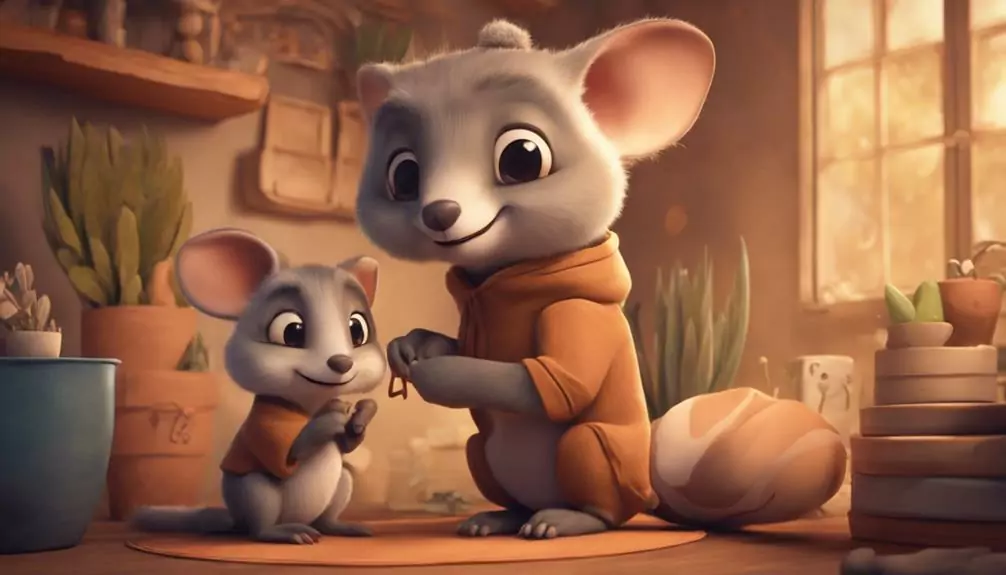
Small marsupials native to Australia, woylies, also known as brush-tailed bettongs, play a crucial role in ecosystem balance through their skilled seed dispersal abilities.
- Nocturnal Behavior: Woylies are primarily active during the night, displaying behaviors suited to low-light environments, such as excellent night vision and sensitive whiskers to navigate their surroundings effectively.
- Distinctive Features: These marsupials are characterized by their unique brush-like tail, which aids in balance and communication within their social groups, and their small size, making them an intriguing species for study and observation.
- Seed Dispersal Specialists: Woylies contribute significantly to their ecosystem by dispersing seeds through their feeding habits, helping in the regeneration of plant species and maintaining biodiversity within their habitats.
- Conservation Challenges: Unfortunately, woylies face significant threats, including habitat loss and predation, leading to their classification as critically endangered. Conservation efforts are crucial to safeguarding this species and ensuring their survival in the wild.
Tasmanian Devils
Woylies, with their unique ecological significance, offer a compelling introduction to the diverse world of marsupials, leading us to explore the intriguing characteristics and conservation challenges faced by Tasmanian Devils. Tasmanian devils, native to Tasmania, Australia, are renowned for their powerful jaws and strong bite force. These nocturnal creatures have a diverse diet, feeding on carrion, insects, and small mammals. While they primarily scavenge for food, they can also hunt live prey when necessary.
Despite their fascinating nature, Tasmanian devils are facing a severe threat from the Devil Facial Tumor Disease, which has decimated their population in recent years. Conservation efforts are crucial to protect these iconic marsupials and ensure their survival in the wild. Due to their wild and sometimes aggressive behavior, Tasmanian devils aren't suitable as pets for the average animal lover. It's essential to appreciate them from a distance and support conservation initiatives aimed at preserving their species in their natural habitat.
Bilbies
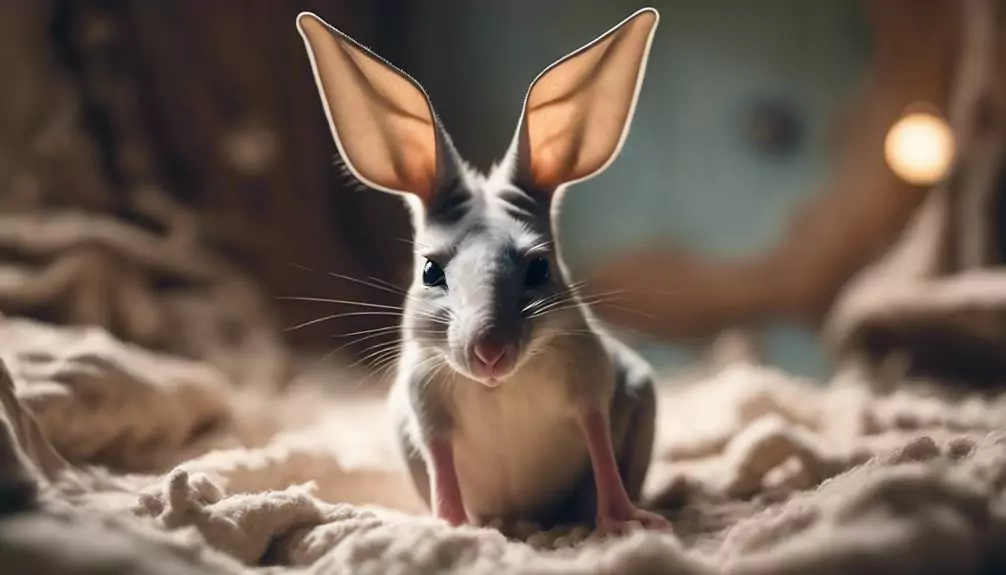
Among the unique marsupials native to Australia, Bilbies stand out for their distinctive features and ecological importance.
- Pet Potential: Bilbies aren't commonly kept as pets due to their specific dietary and environmental requirements. Their nocturnal nature and need for a large, sandy habitat make them challenging to care for in a domestic setting.
- Australia's Native: Bilbies are small to medium-sized marsupials endemic to Australia, where they play a crucial role in the ecosystem as seed dispersers and soil aerators.
- Conservation Concerns: Conservation efforts are vital for the survival of bilbies, as they're classified as vulnerable primarily due to habitat destruction and the presence of introduced predators like foxes and cats.
- Legal Restrictions: Keeping bilbies as pets is further discouraged by legal restrictions in place to protect these vulnerable species and ensure their conservation in the wild. It's essential to support conservation initiatives and appreciate bilbies in their natural habitat rather than attempting to keep them as pets.
Frequently Asked Questions
What Is the Best Pet for an Animal Lover?
When considering the best pet for an animal lover, it's crucial to evaluate factors like space, time commitment, and financial resources. Research various species such as bird species, reptile breeds, small mammals, and aquatic creatures to find the perfect match.
What Marsupials Can You Have as Pets?
You can have sugar gliders and wallabies as pets due to their small size and social nature. Possums, such as pygmy possums, may require specialized care. Quokkas are not typically kept due to conservation concerns.
What Is the Best Exotic Animal to Own as a Pet?
When considering the best exotic animal to own as a pet, you may find sugar gliders to be unique companions. Their manageable care requirements and sociable nature allow for a special bond with dedicated pet owners, despite uncommon challenges.
What Is the Friendliest Exotic Pet?
When seeking the friendliest exotic pet, you'll discover that sugar gliders stand out. Their affable nature and ability to form strong bonds make them ideal companions. With the right care, these adorable marsupials can become your loving buddies.
Conclusion
As you navigate the diverse world of marsupials as potential pets, remember that each species offers a unique opportunity for companionship and wonder. Just like the intricate pouches that protect their young, these animals hold secrets waiting to be discovered.
Embrace the challenges and rewards of caring for these fascinating creatures, and you may find yourself on a journey of growth and connection unlike any other. Explore the world of marsupials with an open heart and mind, and you may just find a treasure trove of joy and fulfillment.
